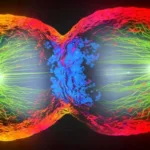Gas Gangrene
Definition(Oakley, 1954)
Gas gangrene is defined as a rapidly spreading, edematous myonecrosis, occurring in association with severely crushed wounds contaminated with pathogenic clostridia, particularly with C. perfringens. Previously, the disease was called malignant edema or clostridial myonecrosis.
Etiological Agents
Gas gangrene is always polymicrobial and is caused by many clostridial species.
Established agents:C. perfringens (most common, 60% of the total cases) and C. novyi and C. septicum (20–40%)
Probable agents: They are less commonly implicated, e.g. C. histolyticum, C. sporogenes, C. fallax, C. bifermentans, C. sordellii, C. aerofoetidum, and C. tertium.
Pathogenesis
The development of gas gangrene requires:
Anaerobic environment: Crushing injuries of muscles such as road traffic accidents (causing laceration of large or medium-sized arteries), open fractures of long bones or foreign bodies (bullet injuries) or devitalized tissues lead to interruption in the blood supply and tissue ischemia.
Anoxic muscles start utilizing pyruvate anaerobically to produce lactic acid
Contamination of wound with clostridial spores present in the soil (during war or road traffic accident) or clothes.
Rarely, spontaneous non-traumatic gas gangreneoccurs via hematogenous seeding of normal muscle with bowel clostridia, as occurs in people with gastrointestinal pathologies (e.g. colonic malignancy).
- CLINICAL FEATURE SIgn &Symptoms
- Sudden onset of excruciating pain at the affected site
- Rapid development of a foul-smelling thin serosanguineous
- discharge
- Gas bubbles (crepitus) in the muscle planes (.
- https://sciencegajab.com/
- Brawny edema and induration
- Such gangrenous tissues later may become liquefied and sloughed off
- Shock and organ failure develop later
- Associated with higher mortality rate (50%)

